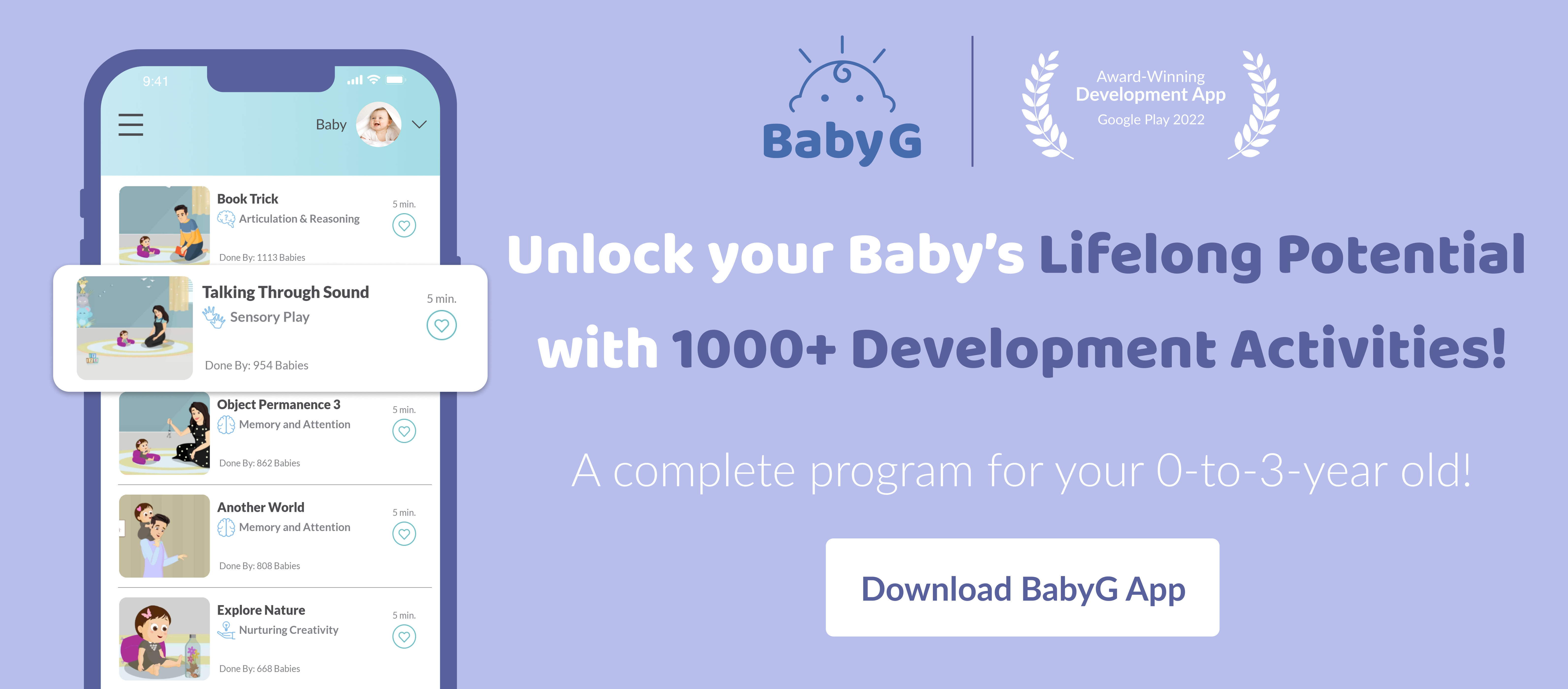
What Milestones Should A 10 Month Old Have
While your child may grow weary of strangers, by the 10th month, your child will be a little more communicative of those feelings. They will look for you, voluntarily laugh in social situations and point out when they need something. The developing skills, especially the motor abilities will drive parents to baby-proof their house, if they haven’t already. Let's take a peek at the important 10 months baby growth milestones that you can keep track of:
Physical Development Milestones For 10 Months Baby
Your child will be on a roll with their fine motor skills, this month, with their growing gross motor skills. They will be able to pick things, demonstrate finger dexterity and sit without support. Learn what else your child will be looking at excelling in this month:
1. Cruising
Your 10 month old will be able to take a few steps with you holding their hand. Consequently, they will even make use of nearby furniture to hold on to for stability to walk.
Completion Rate on BabyG App: 79% Babies
Importance: This is an important event indicating exemplary physical development milestone in a 10 month old, and a precursor to them learning how to walk independently. Holding on to a support for walking sideways, i.e. cruising, helps children keep an upright posture and explore their surroundings better, before they start walking independently as a next step.
What if my baby does not complete this milestone?
If your baby doesn’t reach this milestone by the time they are 10 months old, you may need to put in a little extra effort to give them more chances during the day to learn to walk while holding your hands. If you observe that even after consistent practice, your baby is having a tough time walking with support, you may want to discuss this with their pediatrician.
2. Standing with Support
Your baby will now make use of his or her developed muscles to come to a stand with the support of a wall. They may also do the same while sitting or vice versa, all while holding onto an object or hand for stability.
Completion Rate on BabyG App: 81% Babies
Importance: By making use of external support to come to a stand, babies employ problem-solving skills as well as motor skills to pull themselves up and remain upright. They exercise their leg and core muscles, as well as their hand muscles, for a better grip. When they make use of the wall by leaning against it to stand, they also engage their back muscles for stability.
What if my baby does not complete this milestone?
If your baby doesn’t stand up with support yet, it’s probably because they have not understood the trick yet. So do not worry and show them how they can do it on their own. You can imitate standing with support or help them stand from a sitting position to show how it is done.
3. Pincer Grasp
At 10 months of age, your child will have practiced their inferior grip and will employ the pincer grip. They may demonstrate the same by picking tiny objects from a box and putting them in it, as well as taking apart toys from stacking games.
Completion Rate on BabyG App: 75% Babies
Importance: Achieving this milestone represents that your baby has now learned to grab things with their hands and drop them when required. Practicing this helps strengthen the hand muscles that allows a person to pick, hold, and release an object, showcasing the development of motor control.
What if my baby does not complete this milestone?
The development of the pincer grasp may take as long as 12 months as well. So, if your baby isn’t doing this activity yet, don’t get disheartened. Children need more time than usual to master certain skills. Parents can engage their kids in fine motor activities demonstrated on the BabyG app for a fun learning experience.
4. Improved Finger Dexterity
Children this age may showcase dexterity by holding a container in one hand and taking out small items with another. Consequently, they might also turn through multiple pages of a board book.
Completion Rate on BabyG App: 78% Babies
Importance: The milestone displays strength in the hands and fingers muscles and advancement in motor control, which helps individuals perform 'occupational activities’ or daily tasks with ease. Such an ability allows them to handle and manipulate objects, and make use of them in tasks like playing, getting dressed, writing, and eating.
What if my baby does not complete this milestone?
Developing the skills that employ finger muscles and dexterity takes time and quality practice. Let your pediatrician know if your child is only making use of one side of his body or cannot yet voluntarily release objects from their hold. In the meantime, you can get your munchkin involved in activities that boost finger grip and control as well.
5. Crawls down a Single step without Support
Your little one will now be able to climb a stair-step without any help. Similarly, they will be able to crawl down a step without needing a hand.
Completion Rate on BabyG App: 67% Babies
Importance: Crawling in any form, be it straight on the floor or going down a step or two, helps in building strength and coordination and supports cognitive development. Being able to do this will further your baby’s ability to move around independently.
What if my baby does not complete this milestone?
There’s no need to worry if your baby isn’t doing this yet. It’s not an easy skill to master, after all. Let your baby crawl normally. As your baby builds confidence, you will see them trying this as well.
Physical 8 months old baby activities:
A. Walk with Help
If your child is yet to walk but can take the weight of themselves and stand straight for a while with support. Here’s an exercise you can do with your child to encourage walking, as mentioned in the milestone ‘Cruising’. Take a hold of your baby’s hands and help them stand on their hands. Initially, you may need your partner to physically move the baby’s legs forward while you hold them stably. Once they are accustomed to the activity, they will voluntarily move their feet forward and walk as you hold on.
Frequency: Once a day for a week
B. Climbing Up a Step
Once your child aces ‘Climbing Down’, here’s how to encourage your child to climb up a step. Create a low step, like a thick mattress on the ground, for starters. Now have your child sit next to it and help them crawl up the step. Repeat the activity a couple of times until your child grasps the concept.
Frequency: Once a day for 2-3 weeks
C. Finger Grasp
Here’s an activity to exercise your child’s finger and thumb grip, building their ‘Finger Dexterity’. All you need to do is take a cereal grain and place it in a small plastic glass or cup. Now, allow your child to grasp it with their index finger and thumb. Repeat the process with even smaller objects or grains. However, be alert so that your child does not unknowingly ingest it.
Frequency: Once a day for a week
Cognitive Development Milestones For 10 Months Baby
By the tenth month your child has had exposure to newly comprehended concepts and the mobility for exploring their environment at their own pace. Most of their time will be spent learning through trial and error. Here’s more cognitive development milestones you may notice this month.
1. Takes Interest and Recognizes objects
Your constant use of motherese is to thank for this one. Your infant will now begin to grasp that pictures and figures can also represent real-life objects. This is one of the reasons they will be drawn to pictures and figures in books.
Completion Rate on BabyG App: 79% Babies
Importance: Babies are extremely curious beings. Their ability to identify and remember an object is often closely related to their motor and cognitive skills, attention skills, to be exact. When you show your child a picture of a spoon, make sure they pay attention and can see or touch the spoon. The development of the skill allows for easier object recognition and visual attention.
What if my baby does not complete this milestone?
Learning is a gradual and continuous process. As and when your child is frequently shown an object and allowed to interact with it, the scope of them remembering the same increases. Hence, you may take a couple more tries, use motherese, and make the process fun for them to aptly remember the object and its use.
2. Able to Locate a hidden object by Sound
If you hide an object that produces sound away from your baby, then they will locate it by tracking the sound to the source.
Completion Rate on BabyG App: 90% Babies
Importance: Children this age have a growing sense of object permanence. The complex concept refers to the understanding that an object exists even when it is currently out of sight. As your child understands the workings better, they employ their auditory and visual input to find the toy. This shows development in cognitive, motor and sensory skills.
What if my baby does not complete this milestone?
By this month, most kids are well versed in the concept of object permanence. If you find your child is having trouble with understanding cues, you may engage them in cognitive and motor activities, like the good old peek-a-boo to make them comfortable with the idea.
3. Understand their Way around Obstacles
In the case of an object hidden due to obstacles, they will go around the obstacles to find the object.
Completion Rate on BabyG App: 85% Babies
Importance: Just as the milestone above, this too has its roots in object permanence. Stimulating the drive and curiosity of an infant, this milestone allows your child to build better body control and exercise balance.
What if my baby does not complete this milestone?
You can include a few activities in your baby’s daily play time that encourage spatial awareness and object permanence, to build on this milestone optimally.
4. Observes and Repeats
Given their desire to learn more and more, your baby will observe processes carefully and will successfully repeat one or two steps.
Completion Rate on BabyG App: 70% Babies
Importance: The development of this milestone is an excellent indicator of a child’s social learning. The process of imitation involves processing the activity, employing adequate motor control as well as coordination to emulate, and memory skills to aptly remember for future reference.
What if my baby does not complete this milestone?
Your baby may imitate you in more ways than you may notice. Some indicators may reign between repeating non-verbal cues or babbling along with you. You may encourage the same by imitating an action that they may do and wait for a while until they repeat it to communicate with you. The other way is to make such exercises much more simpler and fun for them. This help acquires their attention and encourage perception.
Cognitive 10 months old baby activities:
A. Object Finding Game
Build the concept of object permanence as mentioned in the milestone ‘Locate a hidden object’ with this exercise. Take a small ball that your child regularly plays with and hide it under a bowl. Demonstrate it a couple of times by revealing the object and hiding it again. Next, ask your child to find the object. This will help them remember the series of actions done in the recent past. Once your child aces this, consequently repeat the same with 2 bowls and hide the ball under one of them.
Frequency: Once a day for 2-3 weeks
B. Getting the Toy
This activity can help your infant ‘Understand their way around obstacles’. Place an obstacle like a large object or a pillow and show your child the toy that you are about to hide. Initially help them go around or show them the toy until they get to the toy voluntarily. Later they will excitedly crawl to get it themselves.
Frequency: Once a day for a week
C. Clap with Me
To encourage imitation mentioned in the milestone ‘Observes and Repeats’ here’s a rhythmic activity to get your child started. Play a rhythmic nursery rhyme with your child every day until she understands the clapping action, and consequently does the same when you do or ask her according to the rhyme scheme. Your action may go something like this:
“Clap clap one two three,
Clap clap you are with me, Clap clap four five,
Clap clap bees in the hive, Clap clap six seven eight
Clap clap you are great, Clap clap nine and ten
Clap clap let's do it again"
Frequency: Once a day for a week
Communication Development Milestones For 10 Months Baby
In terms of communication, your child may be a novice at carrying back-and-forth conversation, but by this age, they are skilled at non-verbal communication cues. They may point at things that interest them and strongly say no, to things that don't. Children at this will actively wave or relay a bye-bye when someone is ready to leave. Learn more about what your 10-month-old child will excel in:
1. Imitates Sounds and Babbles
Your baby will try to imitate simple sounds like ‘mama, bubu, oo, ho, mum, bum,’ etc. They will blabber back at the phone when a conversation is going on. This suggests that your baby now understands what conversations are like and that phones are a way to communicate with others.
Completion Rate on BabyG App: 74% Babies
Importance: By this time, your child will have uttered their first word. They are also well-versed in the back-and-forth nature of a normal conversation and stimulate the same even though they technically cannot speak yet. Such responses and canonical babbling signify a leap in language development and understanding of social cues.
What if my baby does not complete this milestone?
Most infants by this time might have started imitating their parents and actively babbling to be a part of the ongoing conversation. If your child isn't doing so, you may want to get in touch with your child's healthcare provider.
2. Imitates Facial Expressions
They will also be able to imitate facial movements or expressions like sticking their tongue out, opening and closing their mouth, etc.
Completion Rate on BabyG App: 74% Babies
Importance: Since your infant cannot form words and sentences yet, nonverbal cues such as imitating facial expressions help in promoting optimal social interaction. The process stimulates perception, engaging the motor system and neural matching mechanisms to produce a reaction to the person in front of your child.
What if my baby does not complete this milestone?
If your child isn’t returning the social smile or any other facial expression by this month, you may want to bring it up with your child’s pediatrician.
3. Understanding and Reaction of ‘No’
Your child is pretty familiar with the concept of no by now. They will stop doing an action when you tell them “No”. In case they want to express the same, they will turn their head sideways. So if you offer them a toy they don’t like, they will turn their head to either side to reject it. They might also relay the emotion by pushing things or people back with their hands when they don’t want to be disturbed or moved.
Completion Rate on BabyG App: 93% Babies
Importance:The word 'No' is always mainly uttered to keep your child safe and away from any potential danger. Your child's understanding of the intent behind the word and acting on the same showcases successful communication. Thus, building better boundaries and rules. On the other hand, your child employing the word themselves when they reject something helps them self-regulate and form healthier relationships.
What if my baby does not complete this milestone?
Children may take another month or two to grasp the concept of 'No' fully.
Young ones often learn a lot from social referencing and parents can adopt the same for this case. Also you can engage them in activities that promote healthy boundaries to understand the concept better.
4. Points at objects with Intention
Infants will point at things that they may need. By this time, your child will even be familiar with a few words and can point at the object when you name it. For example, if you say, "Where is the ball?". Your 10 month old will point at the ball.
Completion Rate on BabyG App: 58% Babies
Importance: Interestingly, the act of pointing is a leap in an infant's socio-communicative skills. They point to indicate that they have their attention hooked on a need and you have the power to fulfill it. The exchange leaves room for you to locate the object and use motherese to describe it. Accordingly, building their vocabulary with it.
What if my baby does not complete this milestone?
For most parts, babies can start pointing with intention at 12-18 months old. You can encourage the motor function by reading together and pointing at pictures as you read aloud. However, if your child does not point till they are 18 month old you may want to have a word with their pediatrician, as it may indicate autism spectrum disorder (ASD).
Communication 10 months old baby activities:
1. Reading Books by Themselves
Encourage your child to ‘Imitate Sounds and Babble’ with this one. Place your baby on down and hand your baby a book. It could be any small baby book like an animal book, number book, shape books, colour books, etc. Give your child time to explore the book. If she points to any pictures, name the objects. Keep the back and forth communication going by voicing out what interests your baby.
Frequency: Make this part of your daily routine
2. Building Vocabulary
Here’s a fun activity to get your child to ‘Point at objects with Intention’. Take your baby’s bag and fill it with various toys and other items like a bottle, nappy, teether, animal toys, and things that belong to her. Now, empty the bag in front of her and pick one item at a time. As you do, name it and place it in the bag again. Repeat it every day and slowly the baby will start to recall the object as you name it.
Frequency: Once a day for 2-3 weeks
Social and Emotional Development For 10 Months Baby
Your children will be more keen on looking for your reactions and may act in a certain way to incite them by this month. They will showcase social-emotional milestones like showing guilt after doing something wrong, which is a precursor to your baby understanding the concepts of right and wrong, making mistakes, etc. Your baby will also be far more interested in activities done by adults than in their own toys. For example, they may not focus on toys and try to engage with adults who are engaged in daily activities like chopping vegetables, cleaning the room, etc.
1. Tries to Adapt to the Mood
Your infant may make the effort to gel into the social mood around them by participating and smiling or laughing while everyone else is happy and does the same.
Completion Rate on BabyG App: 92% Babies
Importance: Children by now are keen observers. They pick up on the tone according to how they see others react to occasions. They may try to go along with the environment if they notice that their parent is comfortable and enjoying themselves as well. This is called social referencing and is an integral key for emotional development.
What if my baby does not complete this milestone?
This milestone takes a while to develop and can evolve over the second year as well.
2. Will Recognize Themselves
They will recognize and enjoy watching themselves in recently taken videos.
Completion Rate on BabyG App: 73% Babies
Importance: Recognizing themselves through a mirror or a screen allows your child to stimulate their motor and visual skills. The sense of self-awareness develops gradually as children slowly experience their senses. Apart from these, the budding understanding of self helps them self-regulate, feel secure and form better relationships in the future.
What if my baby does not complete this milestone?
The true sense of self-awareness may take as long as 18 months, so rest assured parents.
3. Begins to Get the use of Familiar Objects
If you have been actively introducing your infant to the elements in their reach, they may now grasp the use of such objects. They will showcase this new learning by executing the actions, like talking into a phone, or scooping when handed a spoon.
Completion Rate on BabyG App: 57% Babies
Importance: Infants learn about objects and their use by interacting with them. For example, your will need to use motherese to introduce your young one to a spoon, further detailing how it is to be used, and handed one during this exchange for them to learn about its properties wholly. A 10 month old's developing object permanence as well as motor abilities allow them to investigate and build a better sense of the objects and world around them.
What if my baby does not complete this milestone?
A big factor in achieving this milestone, is getting your child to engage with the object actively. By shaking a rattle they understand that it produces sound. By looking at you using a spoon they gain insight, and as they interact more with one, they will understand how to it.
Social & Emotional 10 months old baby activities:
1. Goof Off
Before your child understands, ’Adapting to the Mood’ allow them to be comfortable with you. You can do so by just being silly. Make funny noises around them, wear pants on your head, and pretend to gobble up their little fingers. It'll make them laugh, and let's be honest, it's fun to do. At this age, they have absolutely irresistible laughs. This should help to build confidence in doing things that make her happy and laugh.
Frequency: 3-4 Times during the week
2. Playing With Siblings
Here’s a social activity, for a twist. Have your child sit with their older brother and sisters, or neighborhood kids for a while. Ask them to sing funny nursery rhymes, tell short baby poems, or just clank with rattles or play games that your child may observe and enjoy. This will encourage them to engage and socialize with other children.
Frequency: 3-4 Times during the week
10 Month Old Feeding Milestones
By the 10th month, your child will get accustomed to a three-meal-a-day rotation with their spread-out breastfeeding sessions. Equipped with about four teeth, they will be able to consume lumpy purees and finger foods. On trips or instances where breastfeeding isn't possible, parents can fight their munchkins' hunger pangs with solid food or the right formula for 10 months baby. With that in mind, here's how much breast milk or formula your child should consume by the tenth month.
Breastfed babies: 4-6 feedings per day, 10-20 minutes each.
Formula-fed babies: 3-4 feedings per day, 6-8 ounces (180-240 mL) of formula.
10 Month Old Baby Sleep Milestones
Your child’s consistent development of nighttime sleep develops gradually from the 9th month and is persistent here with 11+ hours of sleep. While three hours of sleep in the day, the total of which comes up to 14 hours in a whole day.
Speech Milestones For 10 Months Baby
Watching their baby say a few words is one of the most awaited moments for parents! At 10 months, babies show the following speech development:
- May try imitating words they hear.
- May say simple words like dada or mama.
- May respond to statements like “A cow says….”
- May use words such as “uh-oh.”
What should be my baby’s weight, height and head circumference at 10 months
You might have heard this countless times before because it holds that every child is unique. This data provides an average range for a 10-month baby's physical growth. That said, if you are worried looking at the data, don't be. BabyG is all ears and ready to address your doubts about your little one's growth curve in more detail:
Average weight for 10 month boys: 9.2 kg
Average weight for 10 month girls: 8.5 kg
Average height for boys: 73.3 cm
Average height for girls: 71.5 cm
Average head circumference for boys: 45.4 cm
Average head circumference for girls: 44.2 cm
When To Worry About 10 Month Old Baby Milestones
If you see your baby displaying a couple of these signs, it would be a good idea to discuss them with the pediatrician:
- Are unable to sit with or without support
- Show no interest in crawling/scooting
- Doesn’t point at things
- Doesn’t imitate or try to say simple words like mama and dada
- Fails to recognize familiar faces they see often
- Doesn’t demonstrate the use of gestures like waving bye-bye or shaking the head to say ‘no’
- Incisors have not yet erupted in their mouth
- Doesn’t bang two objects as a part of the play
- Is unusually calm
- Doesn’t look when someone calls their name
- Do not smile or cannot be soothed by their primary caregiver
How Do I Support My 10 Month Baby Development
This month is all about keeping the conversation going. Talk them through their experiences, which they will have a ton load of now that they are cruising through the living room. Engaging them in exercises that encourage object permanence will help open up a wide window into a new world of exploration. Also, if you haven't baby proofed your house already, you may want to speed that up. Parents may notice some behavior issues around this time which you may need to factor in while keeping your young one comfortable and secure. Since they are just learning to communicate with you through back-and-forth babble, your young one may feel the need to convey their irritation and emotions by crying. Such times can get stressful for a parent and at most times, all that can soothe an infant is their parent's loving touch. Parents can help them expand their skills by integrating developmental activities that give them the key to do so. This is where BabyG's excellent early childhood development program comes in.
New parents are bound to be wary yet curious in these uncharted territories. You can start actively tracking their sleep, feeds, poop, and pee patterns to understand their growth patterns. Such baby milestones trackers help you look out for any warning signs early in your baby’s development. Our in-app trackers, schedules, live chats, like-minded parents community, and many more aim to address all your burning questions in the best possible way. So you can unlock the full potential of your little bundle of joy.
Would you like to know the exciting milestones that lie ahead for your baby in the next month? This is what your baby will expel as they cross the threshold with developmental milestones for 11 months baby.


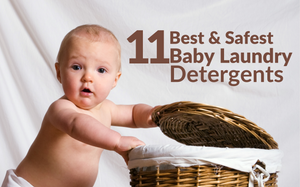
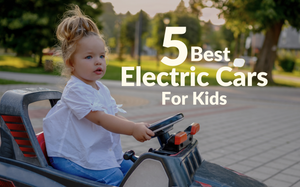


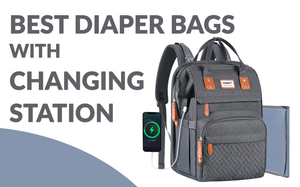
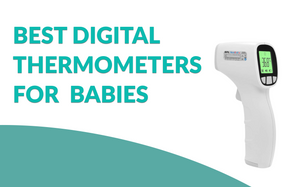

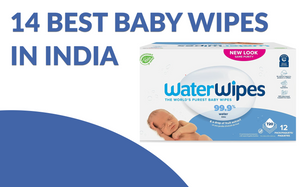

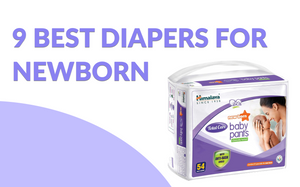

LEAVE A COMMENT